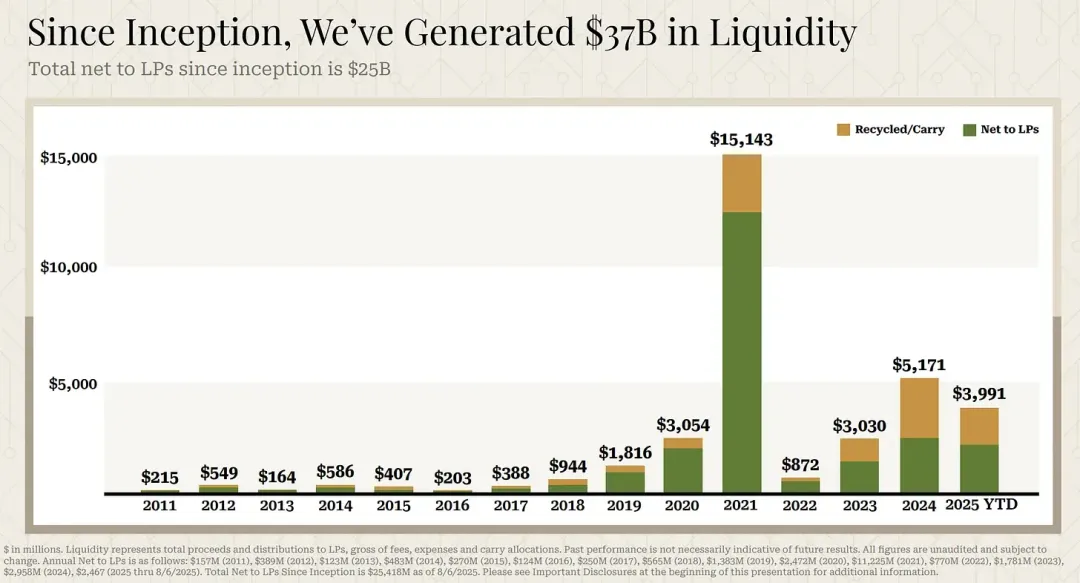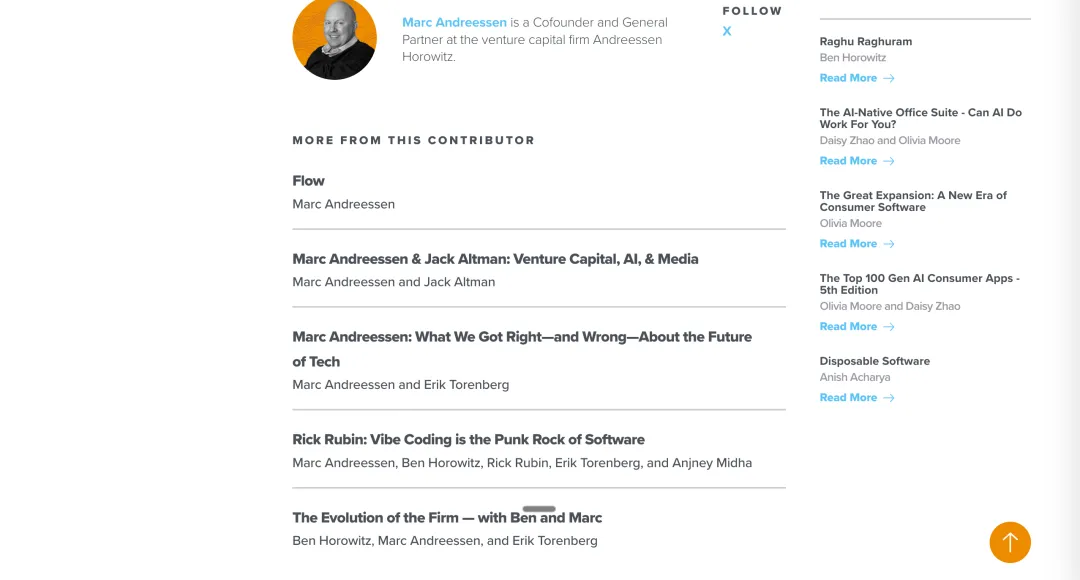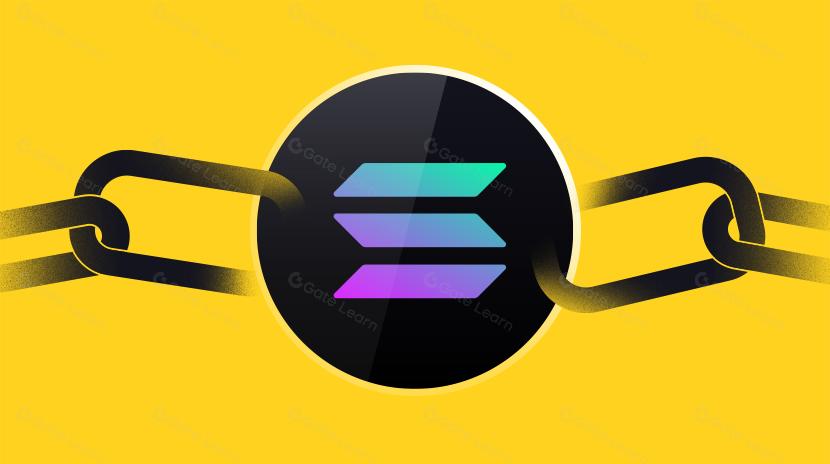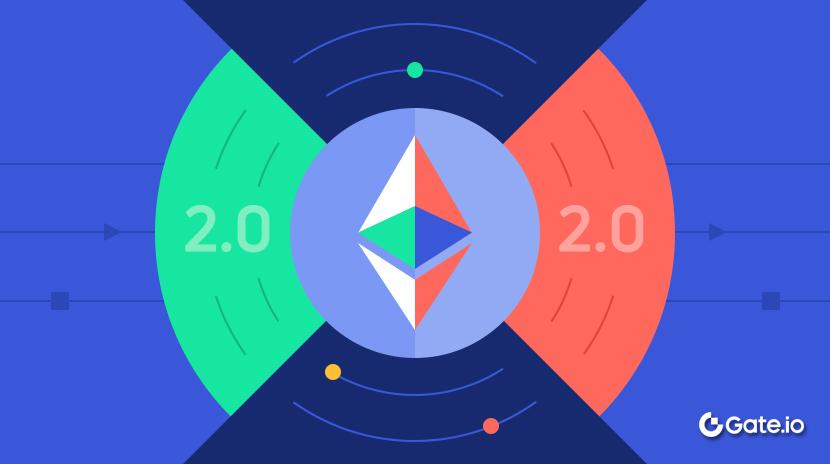a16z is a media company
Influence Is Power
Today’s leading venture capital firms have essentially become media companies.
a16z exemplifies this transformation.
In 2009, a16z’s founder Marc Andreessen set out with a clear vision—a media company that profits through investment.
Back then, this was a bold approach. But as of 2025, it has proven to be the most accurate forecast for the future of VC.
Attention is now more scarce than fiat currency.
Fiat money can be printed at will, but each person only has limited waking hours daily. Attention alone is good only for traffic-driven business—celebrity endorsements are built on this logic.
Yet, attention combined with trust becomes influence. Influence is the truly scarce asset that can be monetized.
Globally, there are only two places where monetizing influence is fully legal: the crypto industry and the primary market.
Justin Sun is widely criticized for hyping tokens in crypto. But when a16z does something similar in the primary market, it’s viewed as a benchmark.
So how does a16z pull this off?
Power
a16z’s core competency can be summed up in one word: power.
Marc Andreessen explains: “We have always believed the thing you want from a VC is power—the ability to capture public attention.”
What exactly is this power?
It’s the ability to set the industry agenda, shape public opinion, and attract follow-on investment. Content is the vehicle for this power.
Marc himself is a world-class content creator.
From 2011’s “Why Software Is Eating the World,” to 2020’s “It’s Time to Build,” to 2023’s “Why AI Will Save the World” and “The Techno-Optimist Manifesto,” nearly every essay Marc publishes sparks industry-wide debate.
Over the past two years, he’s published major essays roughly every eight months—each one a meticulously crafted product.
The impact of these essays comes down to two key strengths.
First, Marc’s acute grasp of prevailing sentiment. “It’s Time to Build” resonated with the West’s sense of helplessness at the start of the pandemic.
Second, his ability to elevate business topics to the level of national or civilizational urgency. “The Little Tech Agenda” directly equates supporting small tech companies with defending U.S. tech dominance, framing VC’s interests as America’s interests.
a16z has built a large, professional content team.
According to its website, a16z employs dedicated content directors, podcast hosts, and video producers. Chris Dixon leads crypto content; Connie Chan focuses on China and mobile internet; Katherine Boyle spearheads the “American Dynamism” column; and Sriram Krishnan hosts podcasts and helps shape Web3 narratives.
a16z’s content production is industrialized and systematic. They run their own podcasts, YouTube channel, and publish in-depth reports. This team’s job is to turn a16z’s investment themes into viral narratives that reach policymakers, LPs, founders, and other VCs across multiple channels.
With this content capability, a16z can “call the shots”—and move the market.
Calling the shots: Marc’s essays and the team’s systematic output put forward sweeping narratives (Web3 Matters, AI Will Save the World), defining the zeitgeist.
Moving the market: As the narrative gains traction, a16z pours billions into the sector, driving project valuations up by 10x or 100x and making the story real. Other VCs see a16z’s commitment and pile in, further lifting valuations across the board.
This is a16z’s core “narrative-investment” loop.

a16z has delivered $25 billion in net returns to LPs
Content creates influence; investment turns influence into surging valuations. By controlling the narrative and the cap table, it’s much easier to exit profitably.
How did a16z build its “calling the shots” playbook?
Calling the Shots
a16z’s sweeping narrative—“calling the shots”—is driven by a repeatable method. I call it the “a16z Five-Step Narrative Formula.”
Tap into collective emotion, introduce a disruptive framework, create an us-vs-them divide, elevate the narrative to a civilizational scale, and rally with a battle cry.
It’s a stepwise progression.
Step 1: Tap into collective emotion.
Marc’s essays never hype out of nowhere—they’re exactly half a step ahead of the industry’s mood. Not too far ahead, not behind.
“It’s Time to Build” (2020): “Every Western institution was completely unprepared for the COVID-19 pandemic... this massive institutional failure will shape the next decade.” In the pandemic’s early days, Marc captured the West’s frustration with institutional failure, resonating across political divides.
“Why AI Will Save the World” (2023): “The age of AI is here—wow, people are terrified.” That relaxed opening acknowledges public fear about AI, then goes after AI skepticism head-on.
Step 2: Introduce a disruptive framework.
After establishing emotional resonance, Marc immediately introduces a paradigm shift, steering the debate to his turf.
“Why Software Is Eating the World” (2011) sidesteps the “tech bubble” argument, reframing the issue: “Software is becoming the infrastructure for every industry”—a true economic revolution. Valuation debates become questions of whether you understand the future.
“It’s Time to Build” skips supply chain details, saying: “The problem is desire. We need to want these things. The problem is inertia, the problem is will.” Elevating supply chain issues to questions of America’s national will and spirit.
Step 3: Create an us-vs-them divide.
Marc simplifies the world into two camps, forcing readers to pick a side.
“The Little Tech Agenda” (2024): “We support those who support small tech. We oppose those who oppose small tech.” That’s stark, mobilizing language: We are Little Tech startups; they are Big Tech giants and harmful government policies.
“Why AI Will Save the World” (2023) goes further: We are AI builders, heroes, optimists. They are doomsayers—Baptists (naive but manipulated), bootleggers (profiting behind regulators), even labeled “AI risk cult.”
Marc not only draws battle lines, but labels opponents to undermine their legitimacy.
Step 4: Elevate to a civilizational scale.
Marc is expert at raising the stakes, framing concrete topics as matters of nation, humanity, or civilization.
“The Little Tech Agenda”: “American technological supremacy, and the crucial role of small tech startups in maintaining it... a political priority equal to any other.” Supporting startups = U.S. tech supremacy = national security. VC interests are national interests.
“The Techno-Optimist Manifesto” (2023): “We believe growth is progress; stagnation leads to death.” Tech optimism = survival; opposition = death. Business choices become existential.
Step 5: Rally with a battle cry.
Marc condenses complex arguments into punchy, memorable slogans. The title itself is the rallying cry—repeated throughout and reinforced at the end.
Key title traits:
- Strong themes (Manifesto, Agenda—grand declarations)
- Calls to action (“It’s Time to Build”—imperative, mobilizing)
- Expansive terms (“World,” “Future”—emphasizing direction)
- Minimal modifiers (brevity signals confidence)
For example, “It’s Time to Build” repeats throughout the essay; “Why AI Will Save the World” ends with “We win, they lose.”
“The Little Tech Agenda” closes with a sweeping vision:
“The glory of a Second American Century is within our reach.
Let’s grasp it.”
(The brilliance of a Second American Century is within reach. Let’s seize it.)

a16z’s site radiates conviction—you can tell Marc is deeply committed to his vision
Marc knows his audience; his essays are B2B, not B2C clickbait. The intended readers are policymakers, VCs, LPs, founders, engineers, media, and thought leaders.
This means his titles must be concise, grand, and forceful—so even those who skim can remember and share the core idea.
This is the essence of a16z’s “calling the shots” strategy. It primes the market emotionally for follow-on moves, creates industry FOMO, moral legitimacy (“investment as justice”), political elevation (“investment as safeguarding civilization”), and mobilization (“It’s Time to Build”).
Now, let’s see how a16z turns narrative into tangible financial returns.
Moving the Market
a16z’s narrative is only the starting point. What closes the loop is immediate investment—getting hands-on and moving the market.
In 2021, a16z published essays championing Web3, including “Why Web3 Matters” and a policy agenda. At the same time, it announced the $2.2 billion Crypto Fund III.
By 2022, the fund grew to $4.5 billion for Crypto Fund IV.
a16z backed Web3 stars like OpenSea and Dapper Labs. OpenSea’s valuation exploded from $1.5 billion in July 2021 to $13.3 billion in January 2022—within six months.
The logic is simple.
a16z uses essays to declare “Web3 is the future,” then backs it up with billions. Other VCs follow a16z’s lead; LPs increase their Web3 allocations. The whole sector’s valuations soar.
The same model plays out in AI. In June 2023, Marc published “Why AI Will Save the World,” debunking AI risk narratives and pushing AI acceleration. That year, a16z invested in Character.AI, leading a $150 million Series A. In 2024, it doubled down on AI infrastructure and applications.
This is the “narrative-investment” dual flywheel at work.
Narrative generates attention and expectation; investment converts expectation into real valuation. The grander the narrative, the more capital follows and the bigger the valuation jump. As the earliest, largest investor, a16z captures outsized returns.
Most importantly, a16z’s playbook is now seen as morally legitimate.
Marc’s essays recast investment as a grand mission—defending U.S. tech dominance, advancing humanity, fighting stagnation and death. It’s hard to accuse a16z of mere hype when its narrative centers on national interests and existential stakes.
With enough power, you can shape the price chart. In today’s market, Trump is viewed as a dominant figure in stock movements.
a16z does the same: building expectations with content, delivering reality with capital, and legitimizing the process with sweeping narratives.
This is the pinnacle of monetizing influence.
Media
Why did a16z choose to become a media company?
The answer lies in Marc’s deep thinking about power and media.
Before 2016, Marc saw tech’s relationship with mainstream media as “healthy, normal, and productive.” On his podcast, he recalls that from 1993 to 2016, media was curious about tech, willing to learn, and eager to understand innovation.
But after Trump’s 2016 election, everything changed.
In spring 2017, Marc noted during media tours: “It was like someone flipped a switch—every outlet became hostile overnight. Absolute, total hostility.”
Marc attributes this shift to three factors.
First, media blamed tech platforms for Trump’s election and projected political polarization onto the tech industry.
Second, social media disrupted traditional media’s business model, causing financial hardship and resentment toward tech.
Third, tech shifted from being a tool provider to a force upending social structure, attracting more scrutiny.
The deeper issue: social media acts as an “X-ray machine.”
X-rays expose everything beneath the surface. Social media does the same—everyone can see, share, and reveal the truth, repeatedly exposing the flaws and hypocrisy of traditional institutions.
Marc cites former CIA analyst Martin Gurri:
“Social media will destroy the authority of all existing institutions by exposing, X-ray style, that essentially none are trustworthy.”

Marc is frequently featured on podcasts challenging the media
In this environment, to gain power—to shape public opinion, set the agenda, and attract investment—VCs must build their own media, bypassing hostile, discredited traditional outlets.
Marc often says: “We have always believed the thing you want from a VC is power. You need power—to meet clients and be taken seriously, to capture public attention.”
a16z’s media platform is the core tool for distributing this power.
Marc compares the strategy to “bridge loans for brands”: before a startup builds its own brand, it can borrow a16z’s brand for market validation.
So, a16z’s motivation for becoming a media company is clear.
In an era when traditional media has lost credibility, only those who control content creation and distribution truly hold power. Power is the most valuable resource VCs can offer startups.
Back to the fundamental question—what is VC?
The traditional answer: VC is a financial intermediary linking LPs and startups, earning returns through investment.
a16z offers a new answer: VC is a media company that profits through investment.
a16z’s success validates this view. Newsletters and podcasts create sweeping narratives; billions in investments convert narratives into soaring valuations; the content team and Marc’s personal influence build a power network.
This “calling the shots + moving the market” flywheel delivers a16z outsized returns in SaaS, Web3, and AI.
What’s more, a16z’s approach is now seen as morally legitimate. Marc’s essays recast investment as “defending U.S. tech supremacy and advancing humanity.”
Justin Sun hypes tokens in crypto—same tactics, but gets condemned. a16z hypes the primary market—narrative → investment → surging valuations—and sets the standard.
The difference?
One is hype without a system, relying on tricks and attention. The other has a method, real capital, and frames business interests as national interests, sustaining influence.
Attention is scarcer than fiat currency. Attention alone only enables traffic-driven business; attention plus trust becomes influence. Influence is the true scarce, monetizable asset.
a16z’s success is a textbook case in monetizing influence.
In this sense, today’s top VCs are all media companies. VC is just one aspect—the core assets are content and influence.
VC is media.
Influence is power.
Statement:
- This article is reprinted from [Zang AI]; copyright belongs to the original author [Zang AI]. If you have concerns about this reprint, please contact the Gate Learn team, which will handle the matter promptly according to its procedures.
- Disclaimer: The views and opinions expressed in this article are solely those of the author and do not constitute investment advice.
- Other language versions are translated by the Gate Learn team; unless Gate is mentioned, translated articles may not be copied, distributed, or plagiarized.
Related Articles

The Future of Cross-Chain Bridges: Full-Chain Interoperability Becomes Inevitable, Liquidity Bridges Will Decline

Solana Need L2s And Appchains?

Sui: How are users leveraging its speed, security, & scalability?

Navigating the Zero Knowledge Landscape

What is Tronscan and How Can You Use it in 2025?
